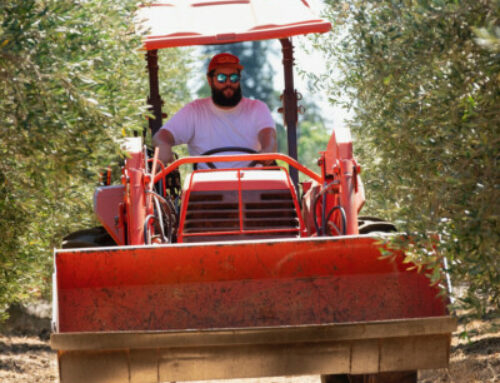Pepper value increases, garlic and cherries drop
Published in the Oct. 15-28, 2014 issue of Morgan Hill Life
By Robert Airoldi
After a hearty 2012 that saw local agriculture recover some of the losses it suffered in 2011, the total value of crops grown in Santa Clara County grew by 1 percent from $260,778,800 gross value to $263,394,800, according to the Santa Clara County Division of Agriculture’s annual crop report.
Crops grew by 5 percent from $248 million in 2011 to $261 million in 2012.
The county’s top three crops remain the same as the last decade-plus: Nursery crops ($76 million, down from $83 million in 2012), mushrooms ($68 million, up from $63 million in 2012) and bell peppers ($17 million, up from $14 million in 2012).
Falling after making a comeback in 2012 is garlic, which fell from $2 million in 2012 to $1 million in 2013.
Cherries, which are consistently in the top 5 of crops grown, dropped slightly from $8.9 million in 2012, to $8.4 million last year.
Growers in 2011 lost their cherries due to late-season rains that destroyed the local crop. Heavy rains in May 2011 caused the nearly-ripe cherries’ skin to crack just before the harvest, rendering the fruit unusable on the market, but favorable weather in 2012 brought the comeback. In 2011, the reported value of local cherries was less than $2 million.
But it wasn’t the rain this year that impacted cherries, it was the lack of winter chill, said Mariani’s Orchard owner Andy Mariani.
“Cherries require a certain amount of winter chill,” he said. “Even though they bloomed well, they did not set fruit because the buds did not receive enough chill. Basically, they didn’t get enough sleep.”
The rest of his crops, plums, apricots, peaches and nectarines, which account for just 30 percent of his total crop production, were good.
“Apricots were surprisingly good because of the dry weather during the bloom,” Mariani said. “They’re first to bloom and subject to rain, but it was dry.”
Bell peppers remain successful in Santa Clara County as prices go up, prompting growers to devote even more acreage to those crops in 2013.
Acreage for bell peppers went up from 1,487 in 2011 to 1,574 in 2013, and the price went up from $334 per ton to $353 per ton, according to the report.
It’s interesting to note, said Joseph Deviney, Santa Clara County agriculture commissioner, that there are more than 70 varieties of peppers grown in the county. Bell varieties account for the bulk of pepper production, ranking Santa Clara County as the No. 3 bell pepper producer in the state and the No. 4 producer in the United States.
“People think of Apple computers, not apple trees,” Deviney said. “ We’ve got a lot going on there. There’s a lot of farm land worth saving.”
Wax and chili peppers saw noticeable decreases in acreage and price in 2013. In 2012, 646 acres were dedicated at a price of $511 per ton. Last years those numbers dropped to 480 acres at $83 per ton.
Joe Aiello, owner of Uesugi Farms, said the old adage of supply and demand plays a huge role, as does the weather. Superstorm Sandy struck in October 2012 and affected 24 states, including the entire eastern seaboard from Florida to Main and west to Michigan and Wisconsin.
“We had an increase in pepper prices,” Aiello said. “We ship stuff from one side of U.S. to the East Coast. If there are weather problems there, it can extends our market across the Mississippi.”
Other crops that saw gains in 2013 were tomatoes ($1.156 million gain), salad greens ($532,000 gain), lettuce ($2.55 million gain), Chinese vegetables ($1.48 million gain) and spinach ($2.65 million gain).
Cut flowers saw a decrease of about $688,000 million in 2013, as did celery ($151,000 decrease), garlic ($970,000 decrease) and hay ($231,000 decrease).
Wine grapes saw an increase from $7.2 million in 2012 to $8.8 million in 2013.
Cattle saw a decrease from $6.1 million in 2012 to $4.9 million in 2013.
The factors that go into farming are complicated, Deviney said.
“The lack of rain really hit the range land hard,” he said. “There was a decrease in hay and cattle for a number of years now. But row crops like celery, peppers and tomatoes did fairly The Santa Clara Valley Water District knows every bit of water that comes in and our farmers water efficiently using drip systems. Thousands of acres of farmland in the Central Valley were not farmed but here our farmers farmed and they got a better price, for the most part.”






